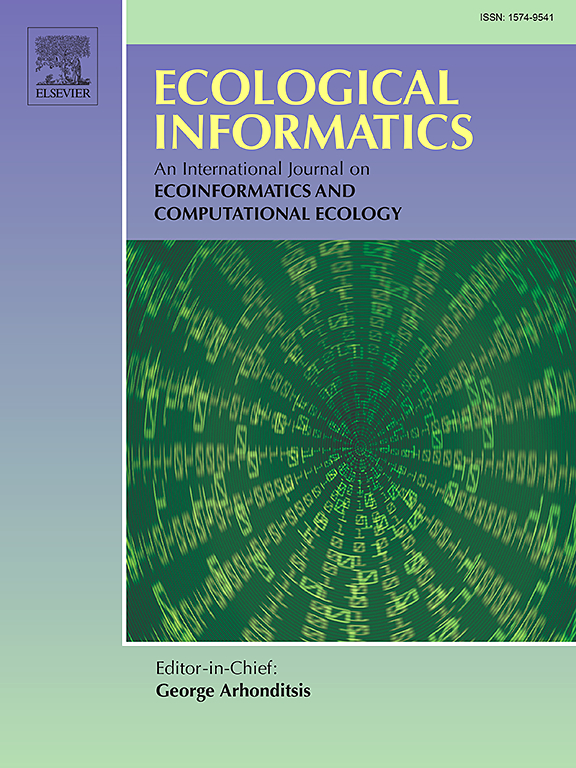Optimal band selection and transfer in drone-based hyperspectral images for plant-level vegetable crops identification using statistical-swarm intelligence (SSI) hybrid algorithms
IF 5.8
2区 环境科学与生态学
Q1 ECOLOGY
引用次数: 0
Abstract
Hyperspectral imagery from drones are excellent sources of high-resolution plant-level data that helps in efficient crop identification for smart agriculture practices. However, the plant-level crop identification is still challenging, owing to only minute differences among the vegetation spectra and enhanced background diversity. Though the inherent spectral redundancy in hyperspectral data is dealt with various band reduction techniques for distinguishing different land use land cover (LULC) structures at broader level, band reduction at finer level has not been explored, especially for drone-based hyperspectral imagery. In this work, we propose a statistical-swarm intelligence (SSI) hybrid approach for optimal band selection in hyperspectral images for identification of three crops, cabbage, eggplant and tomato, using drone-based imagery acquired over experimental plots of University of Agricultural Sciences, Bengaluru, India. We ranked the spectral bands based on their separability among the ground truth classes that follows a Weibull distribution and applied swarm-intelligence algorithms for the optimal band set. The optimal band set is further tested for its capability to distinguish crops from images acquired at different flight heights of drone, and at different points of time. The results suggest that only 15 bands (462 nm, 470 nm, 498 nm, 502 nm, 514 nm, 534 nm, 542 nm, 550 nm, 582 nm, 590 nm, 614 nm, 762 nm, 902 nm, 914 nm, and 930 nm), spread at specific wavelengths in 450–650 nm and 850–950 nm range are sufficient to distinguish crops at finer spatial resolution and offer classification accuracy of over 93 %, supported by equivalent levels of F1 (0.93) and kappa coefficients (0.9). The specific wavelengths corresponding to optimal bands are capable of detecting crops in images captured at different heights and taken at a different time period, showing the space-time transfer potential of the selected bands for crop detection. The specific wavelengths are also capable of detection of crops in ground based hyperspectral sensor images. Future works on extending to a range of crop species and functional cross verification across airborne or satellite imagery will exemplify the generalizability.
求助全文
约1分钟内获得全文
求助全文
来源期刊

Ecological Informatics
环境科学-生态学
CiteScore
8.30
自引率
11.80%
发文量
346
审稿时长
46 days
期刊介绍:
The journal Ecological Informatics is devoted to the publication of high quality, peer-reviewed articles on all aspects of computational ecology, data science and biogeography. The scope of the journal takes into account the data-intensive nature of ecology, the growing capacity of information technology to access, harness and leverage complex data as well as the critical need for informing sustainable management in view of global environmental and climate change.
The nature of the journal is interdisciplinary at the crossover between ecology and informatics. It focuses on novel concepts and techniques for image- and genome-based monitoring and interpretation, sensor- and multimedia-based data acquisition, internet-based data archiving and sharing, data assimilation, modelling and prediction of ecological data.
 求助内容:
求助内容: 应助结果提醒方式:
应助结果提醒方式:


